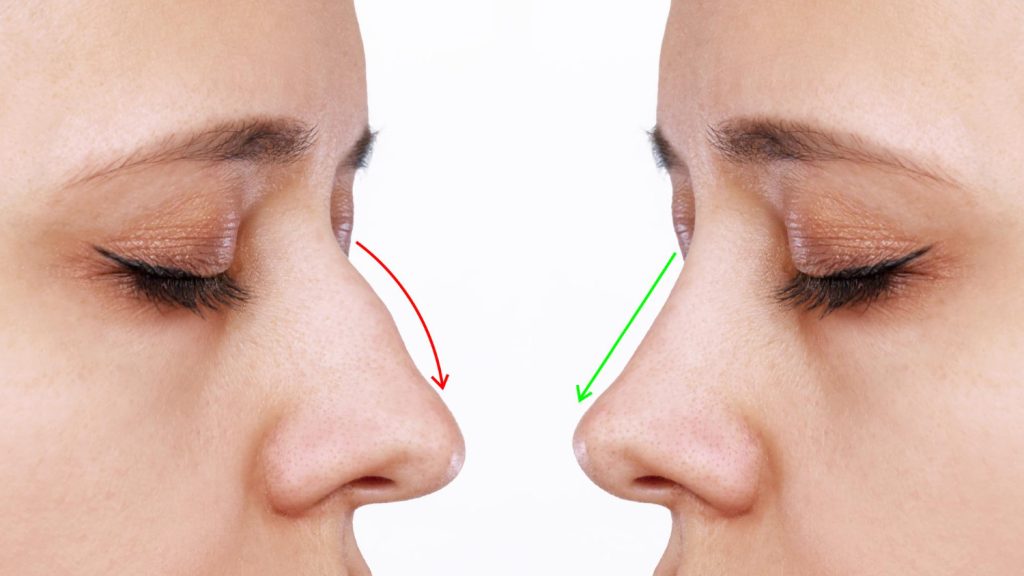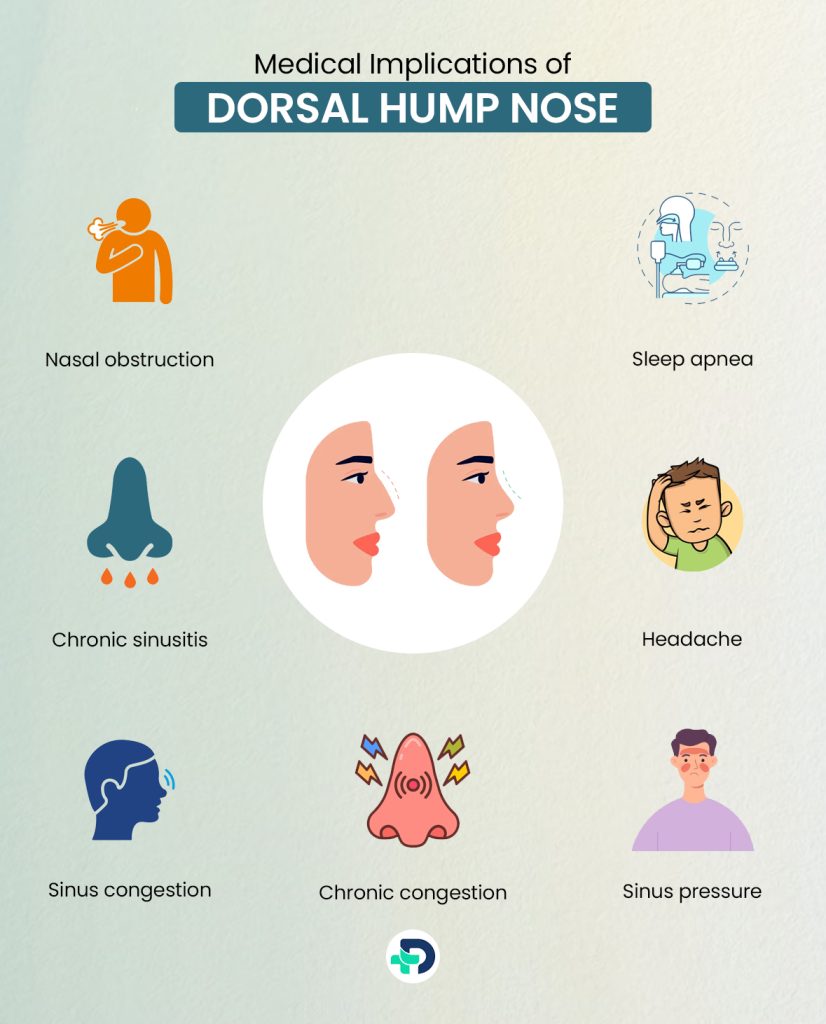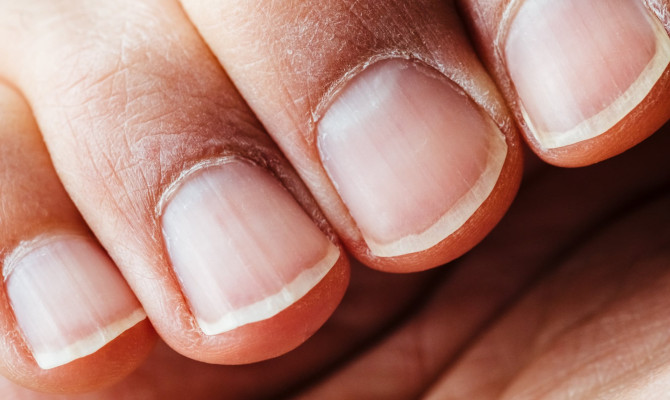Everything You Need To Know About Dorsal Hump Nose

- Nose
- 22 Sep 2023
Introduction
What is a Dorsal Hump Nose?
A dorsal hump nose, often referred to simply as a dorsal hump, is a nasal feature characterized by a visible and raised bump or curvature along the bridge of the nose. This can vary in size and shape and is typically made of bone and cartilage. The human face is a canvas of individuality; each feature contributes to a unique and beautiful mosaic. Among these features, the nose stands prominently for its functional role in breathing and smelling and its significant impact on facial aesthetics.

This comprehensive article will delve into the intricate details of the dorsal hump nose phenomenon. From its anatomical underpinnings to the various factors contributing to its development, we will explore its diverse impact on individuals and their lives.
We will also navigate the realm of treatment options, ranging from non-surgical approaches to surgical procedures.1 Introduction| Researched based study from Research Gate
Causes
What Causes a Dorsal Hump Nose?
Genetics and inheritance
Heredity
- Genetics plays a significant role in the development of dorsal hump noses. If one or both of your parents have similar nasal characteristics, you are more likely to inherit this trait. It is a genetic trait because it can be passed down through the generations.
Ethnic variations
- Different ethnic backgrounds may have varying predispositions to it. Certain ethnic groups are more likely to exhibit this feature due to their genetic makeup and nasal structure.
Trauma and injury
Accidents
- A hump can form on the nose as a result of trauma or injury, such as a blow directly to the nasal bridge. The impact can cause damage to the bone and cartilage, resulting in an irregular bump or curvature.
Sports and physical activities
- Athletes involved in context ports are at risk of nasal injuries that can lead to hump formation. Accidental collisions and falls may help this trait develop.1 Causes| Researched based study from Research Gate
Age-related changes
Cartilage changes
- As individuals age, the cartilage in the nose may undergo alterations. The nasal tip may drop slightly, making the bridge less defined. These age-related changes can Accentuate the appearance of a hump even if it was less noticeable earlier in life.
Bone resorption
- The nasal bones of the face, among other facial bones, can change with ageing. Bone resorption or loss of bone density can contribute to the prominence of a hump over time.
It is important to note that a combination of these factors can influence the development of a dorsal hump. While genetics and heredity play a significant role, traumatic incidents or age-related changes can further shape its appearance.1 Causes| Researched based study from Research Gate
Types
Types of Dorsal Hump Nose
Classic
- This is the most common type characterized by a prominent, symmetrical bump along the bridge of the nose. It typically extends from the area just above the nasal tip to the nasal root.
Low dorsal hump
- In this variation, the bump is less pronounced and closer to the end, giving the nose a subtler curvature. This type is often considered less severe and may be less bothersome to some people.
High hump
- It is marked by a more elevated and pointed bump on the nasal bridge. It can create a distinctive profile and is sometimes associated with a more pronounced hook-like appearance.
Asymmetrical
- Some people may have humps that are not perfectly symmetrical. This means that one side of the nasal bridge may have a more noticeable bump than the other, resulting in an uneven appearance. 8Types| Researched based study from National Institutes of Health
How do their sizes and shapes differ?
Size
- It can vary significantly in size from small to barely noticeable to larger and more prominent ones.
Shape
- The shape can be different from person to person. Some may be more rounded, while others may have humps that are more angular or pointed. The overall shape contributes to the individuality of the nose.
Smooth vs irregular
- Some have a smooth and well-defined curve, while others may be irregular or have secondary humps along the nasal bridge. These variations can impact the overall aesthetics.
Implications

Medical Implications of Dorsal Hump Nose
Breathing difficulties
Nasal obstruction
- It can sometimes lead to nasal obstruction or difficulty breathing. This is especially true if the hump is prominent and restricts airflow. Due to these breathing difficulties, individuals with dorsal hump noses may experience snoring, mouth breathing, and disrupted sleep patterns.
Chronic congestion
- The curvature can narrow the nasal passages, making it challenging for Air to pass freely. This can result in chronic nasal congestion, contributing to sinus infections and discomfort.1Implications| Researched based study from Research Gate
Potential health issues
- In severe cases where a dorsal hump significantly obstructs the Airway, it may contribute to sleep apnea, a sleep disorder characterized by repeated interruptions in breathing during sleep. If untreated, it could have detrimental effects on your health.
Chronic sinusitis
- It may be associated with an increased risk of chronic sinusitis, a condition marked by inflammation and infection of the sinuses. The restricted airflow can make it more difficult for mucus to drain correctly, increasing the likelihood of sinus infections.
Headache
- Some people with dorsal hump noses may experience recurrent headaches due to the strain of the nasal passages and the need to breathe through the mouth, particularly during sleep.9 Complications| Researched based study from National Institutes of Health ,1 Complications| Researched based study from Research Gate
Impact on sinus health
Sinus congestion
- It can lead to chronic sinus congestion as the restricted nasal passages make it harder for mucus to drain. This can contribute to sinusitis and sinus pain.
Sinus pressure
- It can create pressure on the nasal sinuses, potentially exacerbating sinus discomfort or headache.1 Complications| Researched based study from Research Gate
Treatment
Dorsal Hump Removal without Surgery
Dermal fillers
- Injectable dermal fillers, such as those made of hyaluronic acid can temporarily camouflage a dorsal hump by adding volume to the surrounding areas of the nose. We can offer minimally invasive options for those seeking a temporary improvement in appearance.
Nasal strips
- They are adhesive strips that can be applied to the outside of the nose. They work by physically widening the nasal passages, potentially reducing the perception of a hump and improving airflow These options may be useful for short-term relief even though they are not long-term fixes.
Makeup and contouring
- Makeup techniques such as contouring with makeup products can create the illusion of a smoother nasal bridge and reduce visual prominence. This approach is entirely non-invasive and provides temporary cosmetic improvement.5 Non Surgical Technique| Researched based study from National Institutes of Health
Surgical Procedures for Dorsal Hump Nose
Rhinoplasty
- It is a surgical procedure that receives the nose, including removing or reducing a dorsal hump. During this procedure, the surgeon makes incisions inside the nose or on the external surface to access and modify the nasal structure. It is a customizable procedure that can address both cosmetic and functional concerns. 2 Surgical Technique| Researched based study from Research Gate
Septoplasty
- In cases where the dorsal hump is associated with a deviated septum (a cartilage that divides the nostrils), septoplasty may be recommended. This procedure corrects the septal deviation and can also improve the appearance.4 Septoplasty| Researched based study from National Institutes of Health
Benefits
Benefits of Dorsal Hump Correction
Improved aesthetics
- It can improve the nose and face’s overall appearance, boosting one’s self-esteem and contentment with their appearance.
Improved breathing
- It can deal with practical problems like respiratory problems.
Long-lasting results
- It provides permanent results, while some non-surgical options offer temporary improvements.3 Rhinoplasty| Researched based study from National Institutes of Health 4 Septoplasty| Researched based study from National Institutes of Health
Preparation
Dorsal Hump Nose-Preparing for Surgery
Preoperative evaluation
Consultation
- Make an appointment to see a board-certified plastic surgeon or otolaryngologist who specializes in rhinoplasty. during this consultation discuss your concerns and medical history. The surgeon will assess your nasal structure and overall health to determine if you are a suitable candidate for it.
Medical clearance
- Depending on your age and medical history, your surgeon may require you to undergo specific medical tests or evaluations to ensure you are physically fit for surgery. This may include blood tests, imaging scans, and a review of your medications.
Lifestyle and dietary adjustments
Quit smoking
- It’s imperative to stop smoking at least a few weeks before surgery if you do. Smoking might delay recovery and raise the chance of problems.
Alcohol and prescription drugs
- The drugs and supplements you should cease taking prior to surgery should be discussed with your surgeon because some could increase the risk of bleeding or interfere with anesthesia.
Follow the doctor’s instructions.
- You’ll receive thorough preoperative instructions from your surgeon. Follow them closely, including guidelines for fasting before surgery and went to stop eating or drinking the night before. 2 Surgical Technique| Researched based study from Research Gate, 3 Rhinoplasty| Researched based study from National Institutes of Health
Techniques
Techniques Used for Dorsal Hump Nose
Anesthesia options
- Primarily, they are performed under general anesthesia. During the process, you won’t feel a thing and will be entirely unconscious. Sometimes, local anesthesia combined with intravenous sedation may be an option.
Open rhinoplasty
- The columella, the skin strip separating the nostrils, is cut by the surgeon during this treatment. This enables for more comprehensive changes because it gives Direct Access to the nasal structures. This is frequently preferred in complex cases or when a significant remodeling of the nose is necessary.
Closed rhinoplasty
- Incisions are performed inside the nostrils during this treatment, totally concealing them. This technique is often chosen for less Complex corrections where minimal access is needed. It typically results in less visible scaring and a shorter recovery period.
Hump reduction
- The doctor will delicately cut away or restructure the extra bone and cartilage that forms the hump. This process involves Precision and skill to achieve a balanced and aesthetically pleasing result.
Nasal bridge refinement
- In addition to hump reduction, the surgeon may perform other adjustment to refine the bridge, ensuring it blends harmoniously with the rest of the nose.
Septal work
- If it is associated with a deviated septum or other functional issues septoplasty may be performed simultaneously to correct these concerns.2 Surgical Technique| Researched based study from Research Gate,3 Rhinoplasty| Researched based study from National Institutes of Health,4 Septoplasty| Researched based study from National Institutes of Health
Aftercare
After-Surgery Care for Dorsal Hump Nose
Observe the doctor’s instructions
- Follow the post-operative instructions provided by your surgeon meticulously. This includes guidelines for wound care medication schedules and activity restrictions.
Keep the head elevated.
- Elevating your head while resting and sleeping can help reduce swelling and promote proper drainage of fluids from the site.
Avoid strenuous activities
- In the initial days and weeks following surgery, avoid strenuous physical activities and exercises that could increase blood pressure or risk of injury to the nose.
Protect the nose
- Be gentle with your nose. Avoid any pressure. Bumping or touching the surgical site can affect the healing process and results.
Hydrate and eat nutritiously
- Staying hydrated and maintaining a balanced diet can support the both speed up the healing process and lower the chance of infection.6 Post Operative Care| Researched based study from National Institutes of Health
Dealing with discomfort
Treatment of pain
- To control it, your doctor may recommend over-the-counter painkillers or prescribe prescription painkillers.
Bruising and swelling
- After dorsal hump removal, swelling and bruising are frequent after effects of surgery. Applying cold compresses gently to the eyes and nose can help reduce it. Most peak within the first few days and gradually improve over the following weeks.
Nasal congestion
- It is also common. Use saline nasal sprays as your surgeon recommends to keep the passages moist and facilitate healing.
Expected healing timeline
Immediate post-operative period (week 1-2)
- During the first week or two, you will have a follow-up appointment with your surgeon to monitor your healing progress. Nasal splints and dressings are typically removed at this stage.
Swelling subsides
- You will see a dramatic decrease in edema and bruising over the first few weeks.
Resume your regular activities.
- Depending on the amount of the surgery, many patients can resume light activities and employment within a week or two.
The ultimate results
- It may take several months for your nose to take on its final shape.
Long term care
- Protect your nose from the sun and avoid trauma for an extended period after surgery. 6 Post Operative Care| Researched based study from National Institutes of Health,7 Outcomes| Researched based study from National Institutes of Health ,4 Septoplasty| Researched based study from National Institutes of Health, 5 Non Surgical Technique| Researched based study from National Institutes of Health
FAQs
FAQs about Dorsal Hump Nose
Can a dorsal hump go away?
- Usually, it won’t go away by itself. The most successful approach is to consider surgical or non-surgical interventions, as mentioned in previous responses. It is essential to consult with a qualified plastic surgeon or suggest specializes in nasal procedures to discuss your specific concern.
Do dorsal humps keep growing?
- It’s important to note that while the dorsal hump itself may not continue to grow, other aspects of the nose and face can change over time due to natural aging process. These changes may affect the perception of the hump. For example, as individuals age, the soft tissues of the face may lose elasticity which can alter the appearance and how prominent the hump appears.
Any feedback on this article?
 This Articles content was accurate
This Articles content was accurate Very Informative Article
Very Informative Article I have a question or a comment
I have a question or a comment
 This article contains inaccurate content
This article contains inaccurate content This article was not helpful
This article was not helpful I have a question or a comment
I have a question or a comment
We appreciate your helpful feedback!
Checkout our social pages
References
-
Research Gate
Introduction | Causes | Implications | Complications
-
Research Gate
Surgical Technique
-
National Institutes of Health
Rhinoplasty
-
National Institutes of Health
Septoplasty
-
National Institutes of Health
Non Surgical Techniques
-
National Institutes of Health
Post Operative Care
-
National Institutes of Health
Outcomes
-
National Institutes of Health
Types
-
National Institutes of Health
Complications





































